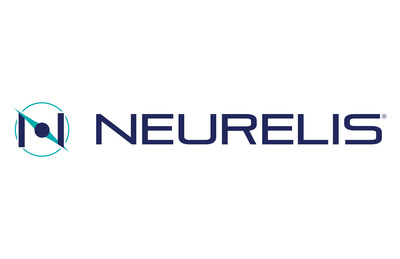| |
New analyses from phase 3, long-term, open-label, repeat-dose study of VALTOCO® (diazepam nasal spray) CIV will be presented
Additional presentations explore anticipatory anxiety of seizures, short-term impacts of seizures on daily life and comparison of treated versus untreated seizure clusters
SAN DIEGO, Dec. 1, 2023 /PRNewswire/ -- Neurelis, Inc., today announced that the company will present six poster presentations at the American Epilepsy Society (AES) Annual Meeting held in Orlando, Florida from December 1 – 5, 2023. Two of the presentations include new analyses of data from the completed long-term phase 3 open-label, repeat-dose safety study of diazepam nasal spray (VALTOCO®) for the treatment of seizure clusters in patients with epilepsy aged ≥6 years, evaluating timing, safety, and effectiveness of treatment. A third presentation focuses on the further assessment of diazepam in a novel preclinical model dosing strategy with potential application for further in vivo studies. Additional presentations explore the concept of anticipatory anxiety of seizures (AAS) through literature review, comparison of treated and untreated seizure clusters in a retrospective analysis from the SeizureTracker® database, and the short-term impact of seizures beyond the seizure itself.

"Our ultimate goal is to improve health outcomes by addressing gaps in seizure cluster treatment and control," said Adrian L. Rabinowicz, M.D., Chief Medical Officer. "The data presented this year at the AES annual meeting demonstrate our ongoing commitment to improving the future of epilepsy care by advancing meaningful, patient-focused treatment outcomes for people with epilepsy."
"Neurelis is at the forefront of epilepsy research, as evidenced by the wide breadth of data presented at this year's AES annual meeting," said Enrique Carrazana, M.D., Neurelis Senior Vice President, Strategic Initiatives. "We look forward to sharing our latest advances and insights with our colleagues who strive to improve care and outcomes for people with epilepsy, particularly those who experience frequent seizure activity and have a high unmet need."
Poster Session Details
Poster Session 2: Sunday, December 3rd, 10:00 AM – 4:00 PM ET
- "Characterization of a Novel Repeat-Dosing Model for Preclinical Diazepam Studies" (POSTER #2.245, Session 2)
A novel preclinical repeat-dosing study of diazepam (DZP) in rats was conducted to identify a dosing strategy for in-life efficacy studies in preclinical models. Results showed sustained and measurable DZP levels in plasma and brain, which were similar to levels observed in humans. Brain-to-plasma ratios indicate an increase of diazepam accumulation in the brain with the repeat-dosing paradigm, suggesting that diazepam may be long-acting at the site of action. The results also support that this dosing paradigm could be used as part of in-life efficacy studies of diazepam.
- "Comparison of Safety and Effectiveness of Diazepam Nasal Spray in Male and Female Patients: Post Hoc Analysis of Data from a Phase 3 Safety Study" (POSTER #2.264, Session 2)
In this post hoc analysis from a long-term safety study, the safety and effectiveness by sex of diazepam nasal spray, including use of second doses and time between seizure clusters (SEIzure interVAL [SEIVAL]), was evaluated. The safety profile and use of second doses as a proxy for effectiveness was generally similar between male and female patients. Females and males also both demonstrated significant increases in mean SEIVAL between the beginning and end of the treatment period, showing similar patterns over time. These results suggest that potential sex differences in benzodiazepine pharmacokinetics and/or pharmacodynamics did not meaningfully influence outcomes associated with intermittent use of diazepam nasal spray.
- "Shorter Time to Treatment Is Associated with Faster Time to Termination of Seizure Clusters in Multiple Subpopulations Treated with Diazepam Nasal Spray" (POSTER #2.265, Session 2)
This post hoc analysis from the long-term safety study of diazepam nasal spray evaluated temporal patterns in treated seizure clusters in relation to time to seizure termination. Data showed shorter time to diazepam administration was associated with more rapid seizure cluster termination, a finding applicable to multiple populations including the overall study population, a group with a large number of treated seizure clusters, and adults and pediatric patients. Results of this analysis reinforce the value of prompt recognition and treatment intervention, which may help minimize risk of injury and additional healthcare utilization and potentially increase patients' and caregivers' sense of empowerment.
- "Importance of Prompt Treatment of Seizure Emergencies: Benefits Beyond Prevention of Status Epilepticus" (POSTER #2.295, Session 2)
A systematic review characterized the short-term burden of seizures and discussed the potential benefit of acute treatment to reduce seizure burden apart from preventing status epilepticus. Acute treatment of seizure emergencies, guided by a seizure action plan, may facilitate a return to normal self/daily activities and reduce healthcare resource utilization and is important to prevent progression to status epilepticus. The rationale in support of prompt treatment for seizure emergencies appears to extend beyond prevention of status epilepticus to include outcomes that reduce the impact of seizures on daily life.
Poster Session 3: Monday, December 4th, 8:00 AM – 2:00 PM ET
- "Exploring Anticipatory Anxiety of Seizures in Patients with Epilepsy" (POSTER #3.247, Session 3)
A subset of people with epilepsy may experience Anticipatory Anxiety of Seizures (AAS), a distinct psychiatric entity characterized by a pathological process that includes fear of having seizures and associated avoidance behaviors. A literature search retrieved studies that addressed AAS and detailed potential pathologic mechanisms. Possible tools to screen for AAS were also explored. The analyses revealed that there is currently no validated screening tool for AAS, however a portion of the Epilepsy Anxiety Survey Instrument may be applicable. Additionally, review of published studies indicate recognition and treatment of AAS may be integral to comprehensive management of patients with epilepsy, and further investigation of the impact of AAS on these patients is needed.
- "Timing Of Rescue Medication Administration and Seizure Cluster Termination" (POSTER #3.283, Session 3)
Analysis of data from a large, online database of patient/caregiver-reported seizures (SeizureTracker®) for three time intervals (≥2 seizures in 4 hours, 6 hours, or 24 hours) shows that treated seizure clusters were found to be associated with significantly fewer seizures per cluster than untreated seizure clusters. In addition, the time between seizure clusters was longer for treated seizure clusters. These results support the hypothesis that administration of rescue medications early in seizure clusters, once detected, is associated with earlier termination of seizure clusters and suggest a potential treatment effect beyond acute termination of seizure clusters.
VALTOCO, a nasal spray for acute treatment of episodes of frequent seizure activity in adult and pediatric patients 6 years of age and older, was approved by the U.S. Food and Drug Administration (FDA) on Jan. 10, 2020.
About Neurelis
Neurelis, Inc., is a neuroscience company focused on the development and commercialization of therapeutics for the treatment of epilepsy and orphan neurologic disorders characterized by high unmet medical need. In 2020, the FDA approved Neurelis' VALTOCO® (diazepam nasal spray) as an acute treatment of intermittent, stereotypic episodes of frequent seizure activity (i.e., seizure clusters, acute repetitive seizures) that are distinct from an individual's usual seizure pattern in adult and pediatric patients 6 years of age and older. VALTOCO is a proprietary formulation of diazepam incorporating the science of INTRAVAIL®. Intravail's transmucosal absorption enhancement technology enables the noninvasive delivery of a broad range of protein, peptide and small-molecule drugs. In its approval of VALTOCO, the U.S. Food and Drug Administration also granted Neurelis Orphan Drug Exclusivity and recognized VALTOCO's intranasal route of administration as a clinically superior contribution to patient care over the previously approved standard-of-care treatment (a rectal gel formulation of diazepam). For more information on VALTOCO, please visit www.valtoco.com. In addition, Neurelis is developing NRL-1049 (previously known as BA-1049), an investigational, Phase I stage small molecule Rho kinase (ROCK) inhibitor, for the treatment of cerebral cavernous malformations (CCMS), a rare disorder of the central nervous system (CNS). For more information on Neurelis, please visit www.neurelis.com. For the latest scientific information on VALTOCO, please visit http://www.neurelismedicalaffairs.com/.
Important Safety Information about VALTOCO:
Indication
VALTOCO® (diazepam nasal spray) is indicated for the acute treatment of intermittent, stereotypic episodes of frequent seizure activity (i.e., seizure clusters, acute repetitive seizures) that are distinct from a patient's usual seizure pattern in patients with epilepsy 6 years of age and older.
WARNING: RISKS FROM CONCOMITANT USE WITH OPIOIDS; ABUSE, MISUSE, AND ADDICTION; and DEPENDENCE AND WITHDRAWAL REACTIONS
- Concomitant use of benzodiazepines and opioids may result in profound sedation, respiratory depression, coma, and death. Reserve concomitant prescribing of these drugs for patients for whom alternative treatment options are inadequate. Limit dosages and durations to the minimum required. Follow patients for signs and symptoms of respiratory depression and sedation.
- The use of benzodiazepines, including VALTOCO, exposes users to risks of abuse, misuse, and addiction, which can lead to overdose or death. Abuse and misuse of benzodiazepines commonly involve concomitant use of other medications, alcohol, and/or illicit substances, which is associated with an increased frequency of serious adverse outcomes. Before prescribing VALTOCO and throughout treatment, assess each patient's risk for abuse, misuse, and addiction.
- The continued use of benzodiazepines may lead to clinically significant physical dependence. The risks of dependence and withdrawal increase with longer treatment duration and higher daily dose. Although VALTOCO is indicated only for intermittent use, if used more frequently than recommended, abrupt discontinuation or rapid dosage reduction of VALTOCO may precipitate acute withdrawal reactions, which can be life-threatening. For patients using VALTOCO more frequently than recommended, to reduce the risk of withdrawal reactions, use a gradual taper to discontinue VALTOCO.
Contraindications: VALTOCO is contraindicated in patients with:
- Hypersensitivity to diazepam
- Acute narrow-angle glaucoma
Central Nervous System (CNS) Depression
Benzodiazepines, including VALTOCO, may produce CNS depression. Caution patients against engaging in hazardous activities requiring mental alertness, such as operating machinery, driving a motor vehicle, or riding a bicycle, until the effects of the drug, such as drowsiness, have subsided, and as their medical condition permits.
The potential for a synergistic CNS-depressant effect when VALTOCO is used with alcohol or other CNS depressants must be considered, and appropriate recommendations made to the patient and/or care partner.
Suicidal Behavior and Ideation
Antiepileptic drugs (AEDs), including VALTOCO, increase the risk of suicidal ideation and behavior. Patients treated with any AED for any indication should be monitored for the emergence or worsening of depression, suicidal thoughts or behavior, and/or unusual changes in mood or behavior.
Glaucoma
Benzodiazepines, including VALTOCO, can increase intraocular pressure in patients with glaucoma. VALTOCO may only be used in patients with open-angle glaucoma only if they are receiving appropriate therapy. VALTOCO is contraindicated in patients with narrow-angle glaucoma.
Neonatal Sedation and Withdrawal Syndrome
Use of VALTOCO late in pregnancy can result in sedation (respiratory depression, lethargy, hypotonia) and/or withdrawal symptoms (hyperreflexia, irritability, restlessness, tremors, inconsolable crying, and feeding difficulties) in the neonate. Monitor neonates exposed to VALTOCO during pregnancy or labor for signs of sedation and monitor neonates exposed to VALTOCO during pregnancy for signs of withdrawal; manage these neonates accordingly.
Risk of Serious Adverse Reactions in Infants due to Benzyl Alcohol Preservative
VALTOCO is not approved for use in neonates or infants. Serious and fatal adverse reactions, including "gasping syndrome," can occur in neonates and low-birth-weight infants treated with benzyl alcohol–preserved drugs, including VALTOCO. The "gasping syndrome" is characterized by central nervous system depression, metabolic acidosis, and gasping respirations. The minimum amount of benzyl alcohol at which serious adverse reactions may occur is not known.
Adverse Reactions
The most common adverse reactions (at least 4%) were somnolence, headache, and nasal discomfort.
Diazepam, the active ingredient in VALTOCO, is a Schedule IV controlled substance.
To report SUSPECTED ADVERSE REACTIONS, contact Neurelis, Inc. at 1-866-696-3873 or FDA at 1-800-FDA-1088 (www.fda.gov/medwatch).
Please read full Prescribing Information, including Boxed Warning.
Contacts:
Neurelis:
Brittany Bradrick, Chief Operating Officer and Chief Financial Officer, +1 858 251 2135
Media:
Glenn Silver, FINN Partners, +1 646 871 8485
 View original content to download multimedia:https://www.prnewswire.com/news-releases/neurelis-announces-presentations-at-the-american-epilepsy-society-annual-meeting-302003072.html View original content to download multimedia:https://www.prnewswire.com/news-releases/neurelis-announces-presentations-at-the-american-epilepsy-society-annual-meeting-302003072.html
SOURCE Neurelis, Inc.
|
|





